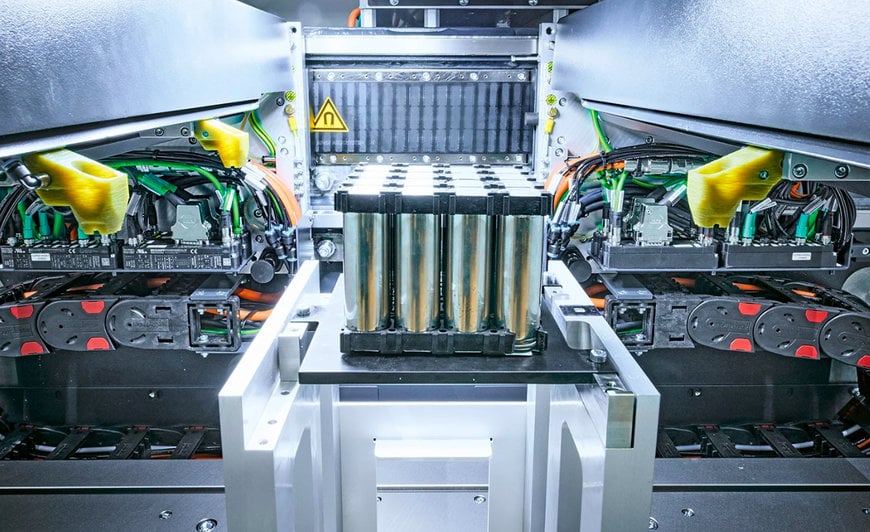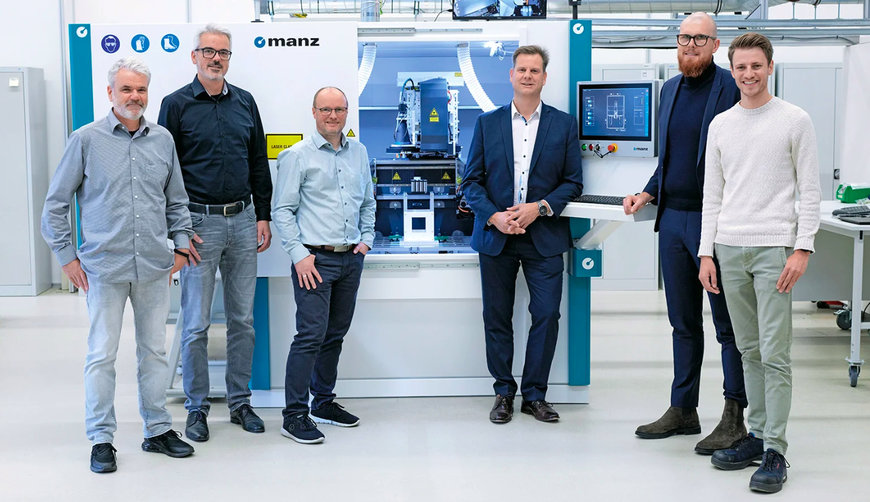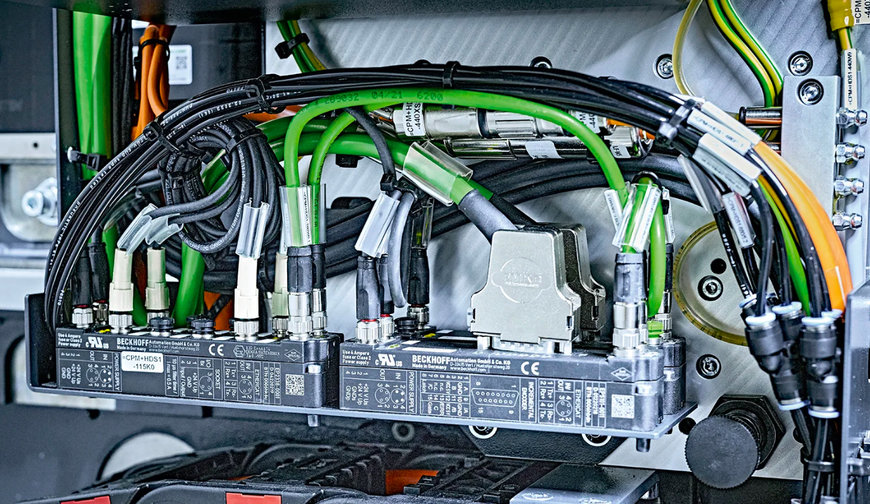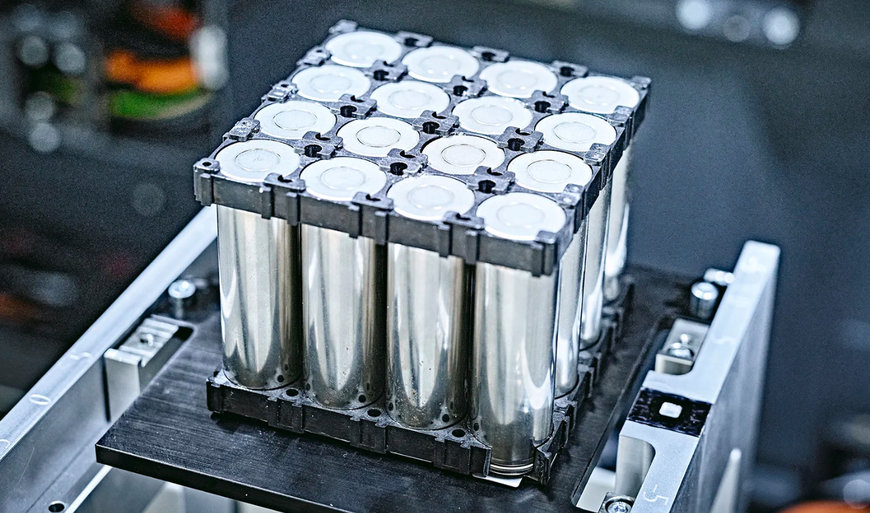www.indo-industry.com
12
'23
Written on Modified on
Automation enables precise and efficient production of lithium-ion battery modules
The BLS 500 laser weldingsystem ensures high efficiency through Manz's graphical programming and virtual commissioning tools, as well as Beckhoff's PC-based control technology, and OPC UA communication.

Manz AG, based in the German city of Reutlingen, is a globally operating hightechengineering company that focuses on production solutions for electromobility,battery production, electronics, energy, and medical technology. Its portfolioranges from customized single machines for laboratory production or pilot andsmall series production to standardized modules and systems or turnkey lines formass production. Consequently, the company has particularly high requirementsregarding the flexibility and performance of the automation technology used, ascan be seen in the production equipment for lithium-ion battery cells and batterysystems as well as capacitors, to name but a few examples.
Application-specific customizable laser platform
A prime example is the new Battery Laser System (BLS) 500, which is designedas a flexible platform for the various laser processes used in the manufacture oflithium-ion batteries. Starting from a standardized machine base, it can operateindividually as a single system where the workpiece is loaded manually or aspart of an integrated production line to achieve high-precision laser welding, aswell as laser cutting and drilling, or partial material removal.
In the BLS 500 application described here, a battery module consisting of roundbattery cells is inserted into the machine manually in a laboratory scenario, butotherwise this is an automated process. The individual cells are then welded tothe contacting elements by laser. As a graphical programming tool, the SmartLaser Assistant uses the CAD data of the underlying battery module to createthe associated recipe, i.e., the optimum path calculation for all welding pointsas well as the appropriate laser power in each case. Stephan Lausterer, Head ofSoftware Core Design and Product Development at Manz, describes the clearapplication advantage as follows: “Our programming tool makes it much easierto adapt the BLS 500 to diverse applications, i.e., to different cell types andmodule formats.

The project participants in front of the BLS 500 (from left to right): Oliver Heilig, sales and system consulting at Beckhoff, Axel Bartmann, Director Marketing and Corporate Communications at Manz, Stephan Lausterer, Head of Software Core Design and Product Development at Manz, Jörg Rottkord and Tilman Plaß, both automotive industry managers at Beckhoff, and Felix Röckel, process developer at Manz
”He adds that the result can then be conveniently examinedin Manz’s virtual commissioning tool, and not only that: “Commissioning isaccelerated and simplified by the fact that using the model the control programcan be tested in detail and realistically in advance, i.e., before the machine has actually been mechanically assembled. In addition, high precision is achievedby using image processing to compare the CAD data of the battery pack withreal-life data and to take any offset values into account during the weldingprocess. In all these aspects, we benefit from the TwinCAT control software withits convenient and powerful OPC UA integration.”
System advantages of PC-based control
The importance of high-performance and, above all, flexible control technologyhas also increased significantly at Manz in recent years, and it was this thatultimately led to the partnership with Beckhoff which has been sustained forover ten years now.

The wide I/O spectrum of IP20 EtherCAT Terminals and IP67 EtherCAT Box modules (here: EP2338 and EP5101 in the BLS 500) facilitates the modularization of Manz systems.
The hardware core of the BLS 500 controller is formed by a C6030 ultra-compactIndustrial PC, whose main advantages Stephan Lausterer describes: “The C6030 is ideally suited to applications like this with limited installation space.In addition, the computer equipped with an Intel® CoreTM i7 CPU providessufficient computing power for both machine control and visualization. Thisalso holds true for future requirements, especially since Beckhoff is graduallyintegrating suitable new processor generations and – with the C6032 – also hasa compact device variant with more interfaces in its portfolio.” Such a versatileindustrial PC also makes sense for Stephan Lausterer from another perspective:“Purchasing and warehousing are significantly simplified as a result. The sameapplies to the entire test tool chain for hardware and software, something whichis hugely important to us at Manz. Accordingly, all the software is tested onvirtual machines as well as on the real hardware.”
All in all, the TwinCAT automation software meets Manz’s requirements verywell, as Stephan Lausterer confirms: “Among other things, we benefit from theintegration of TwinCAT in Visual Studio, as our software team also includeshigh-level language programmers. Added to this is the overall high level of flexibility,for example with the editors for the respective programming languagesand through the variety of functions up to Safety Editor, TwinCAT Scope, andTwinCAT HMI. In our view, this level of integration is a unique selling point ofTwinCAT.” He also adds that motion control can be programmed and simulatedvery conveniently in C++ and with the TwinCAT 3 NC PTP, NC I, and KinematicTransformation blocks, and then run as a TcCOM module in the real-time context.In addition, the TcCOM concept makes it easier to reuse program code andprovide suitable protection of intellectual property.
Higher-level communication via OPC UA
In addition to fast EtherCAT communication for the machine processes themselves,i.e., between the industrial PC and the EtherCAT terminals or drives, Manzrelies on data exchange via OPC UA throughout the BLS 500. This is realized viathe TwinCAT 3 function OPC UA (TF6100) for aspects including the transmissionof camera images to the HMI, integration into higher-level systems, andcross-control communication. The virtual commissioning tool also exchanges data with the TwinCAT controller via OPC UA. Tilman Plaß notes the followingin this regard: “The scope of OPC UA communication is very impressive.

Example of a lithium-ion battery module constructed from round battery cells
Manzrecognized the advantages of standardized, secure, and vendor-independentcommunication early on and uses the TwinCAT OPC UA server and client at aconsiderable scale and with high performance.” Stephan Lausterer confirms this:“Almost all external communication runs via OPC UA, both for our Industrie 4.0products and for customer applications. For non-OPC-UA-capable third-partycomponents, the TwinCAT 3 function TCP/IP (TF6310) or XML Server (TF6421)is used – options which demonstrate the high level of system openness offeredby PC-based control.”
www.beckhoff.com

